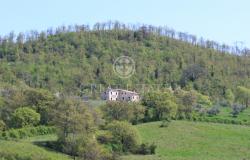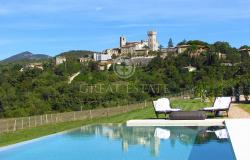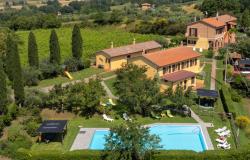An accord signed Friday at Palazzo Bastogi by the president of the Tuscan Region, Claudio Martini, and Finmeccanica General Manager Pier Francesco Guarguaglini favours the development of all industry, but particularly those businesses in the advanced hi-tech sector.
Martini said, ''We are convinced of the necessity of a flourishing industrial sector in Tuscany. For this reason, this agreement seeks to realize projects together in three sectors: avionics, transportation and security systems.
''In this way we would like to favour Finmeccanica's presence and the presence of all the companies that can offer jobs to highly qualified people in our region''.
The agreement was signed at the end of a meeting (vice president Federico Gelli and superintendents Ambrogio Brenna and Gianfranco Simoncini were also present), during which the details of the agreement were discussed and put into the document.
In particular, the problems inherent in some projects already 'ready' to be worked on. The first was the Centro monitoring of waste and dangerous material.
The initiative was created by the EOS project-analyzers for monitoring and satellite radio localization of dangerous materials, approved and financed within the scope of the 1.7 measure of the DOCUP 200-2006.
R&D was strongly supported by SELEX-Service Management (SELEX-SEMA) already involved in a project financed by the Environmental Ministry, that foresees the constitution of a new subsidiary by the same SELEX-SEMA, with a quota of capital equal to approximately 80%, and the participation of economic entities in the Tuscan area (with EOS as primary partner).
The company will have two offices. One in Cecina's Magona Technology Park, which will host the operative centre for the monitoring of the vehicles that transport waste, as well as data archive management.
The other office will be located inside Livorno's (Collesalvetti) Interporto, which will host administrative offices and the operative centre for vehicles transporting dangerous material.
The Cecina office will work in conjunction with the service centre for SELEX-SEMA in Rome.
The two new offices should generate approximately 20 new jobs within the first six to eight months for individuals highly specialized in information systems and data management.
During the first three years, nearly 40 new hires are expected.
The second project already in an advanced stage is the research and innovation centre for optics and electro-optics, which includes the participation of Galileo Avionica (now Selex-Galileo after the merger with Galielo Avionica and the British Selex Sensors & Airborne Systems), Telespazio, and numerous research centres including the Institute for Applied Physics (IFAC), the Institute for Bio-meteorology Ibimet, the Lamma Consortium, the LENS laboratories, the National Institute for Applied Optics, the University of Florence and small and mid-sized businesses around the Florence area and the Tuscan region.
The centre will be based at the Selex-Galileo complex in Campi Bisenzio where they will also open a Fondazione Ansaldo (property of the Finmeccanica group).
The centre will have a strong impact in terms of innovation and technology transfer on small and mid-sized businesses.
During the first three years, 10 to 15 scholarships for doctorates and post-doctorates are expected to be awarded in an effort to encourage young scholars to stick with their studies and not abandon their research and move abroad.
The centre's mission will be the creation of a technological platform for research and design of HD, SW and optics systems for the ''Earth Observation'' and the newest generation electro-optic components.
In particular, during the design phase, which is already in the advanced stages, two divisions have been created: the first will be dedicated to the development and creation of more innovative and better performing optic HD systems.
The second will develop pre-operative algorithms for the definition of new sensor specifications, pre-operative and operative algorithms for the verification and validation of the sensors, and the development of protocols for the validation and certification of products obtained from the data analysis.
Among the 'in progress' projects discussed at the meeting, there is the realization of a flexible, multifunctional, organic surface for interior lighting for airplanes, road vehicles and ships, by SIRIO PANEL s.p.a.
According to the company, the product could have a patented prototype and enter the commercial market within three or four years.
In this case, the project would be developed within the company itself with the collaboration of some Italian and foreign research centres. It could lead to as many as 10 new hires, including physicists, chemists and engineers.
An agreement was also made with Ansaldo Breda for the realization of a research centre charged with increasing the security levels relative to environmental impact and optimization and power of the regional transport system.
Pistoia official also participated in the last session (Province president Gianfranco Venturi and Mayor Renzo Berti), along with union representatives from Cgil, Cisl and Uil.










